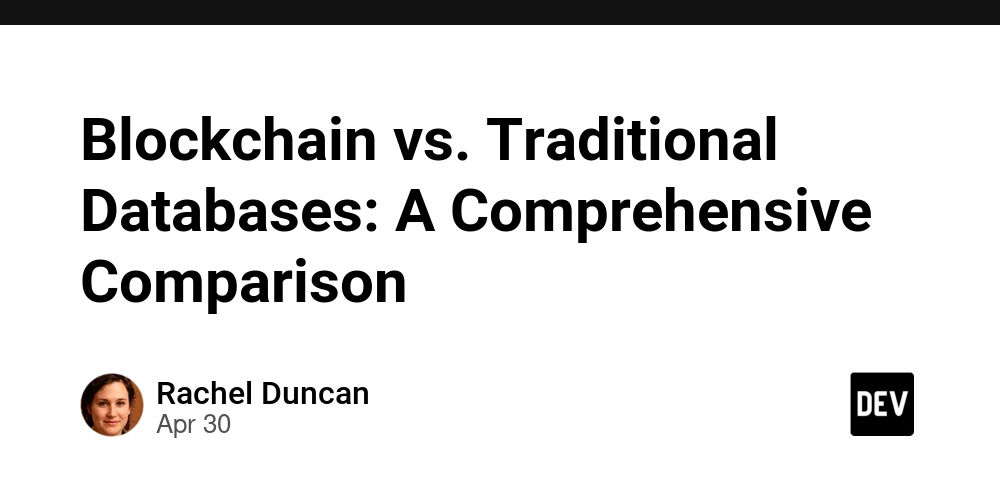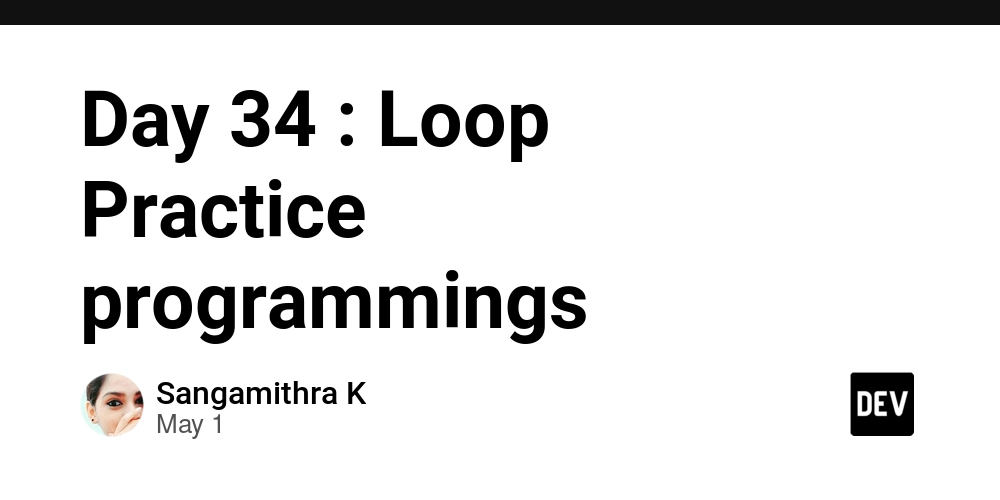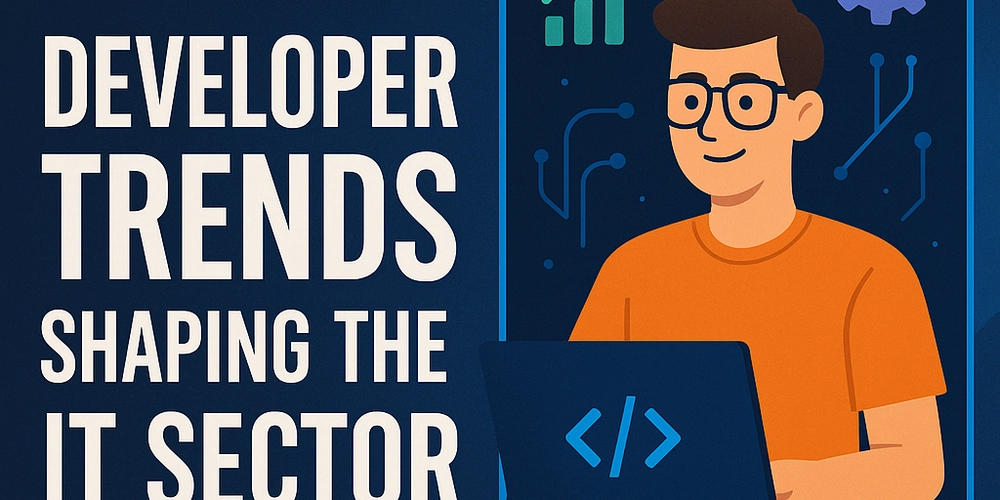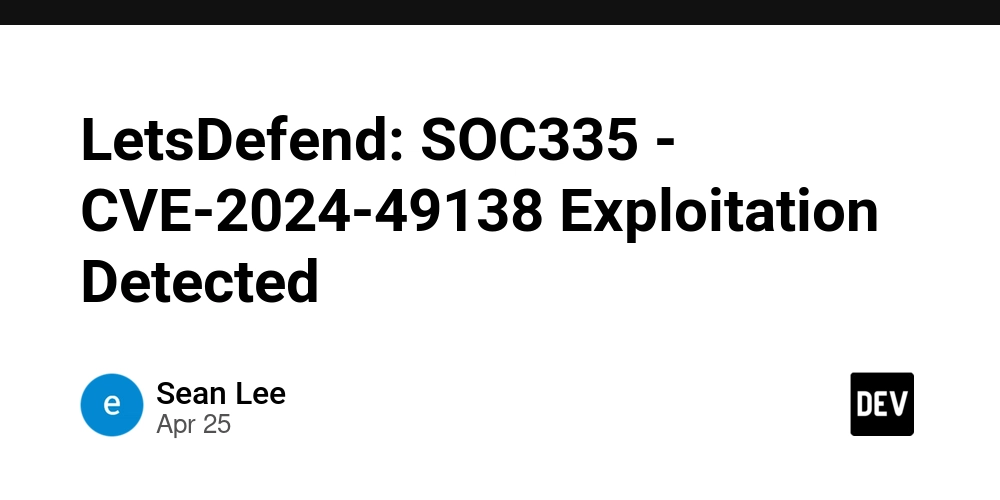Blockchain vs. Traditional Databases: A Comprehensive Comparison
Abstract This post presents a holistic view and detailed analysis of blockchain technology compared to traditional databases. We discuss their history, key features, applications, challenges, and future outlook. With clear explanations and technical insights, this guide will assist decision makers and developers in understanding when to apply these data management technologies. Along the way, we include tables, bullet lists for quick reference, and several authoritative links, including our original article on Blockchain vs. Traditional Databases. Introduction In today’s data-driven world, efficient data management is essential for businesses of all sizes. Traditional databases have long been the backbone of information storage, while blockchain technology is emerging as a disruptive force. Both approaches are powerful yet come with their unique advantages and challenges. As organizations look for more transparency, security, and efficiency, it is crucial to understand the differences between these two systems. This post explores their backgrounds, core features, and how each technology fits into modern applications. Background and Context Traditional Databases Traditional databases, usually implemented as relational database management systems (RDBMS), are based on a centralized structure. They use SQL for querying and ensure data integrity using ACID properties (Atomicity, Consistency, Isolation, Durability). Their advantages include: Centralized Control: Single point of management and governance. High Performance: Optimized for speed and efficiency with complex queries. Scalability: Achieved through hardware upgrades or data distribution strategies. Cost-Effectiveness: Economical for certain enterprise applications. Traditional databases have powered financial institutions, e-commerce platforms, and internal enterprise applications for decades. For more details on traditional database systems, you can refer to What is a Database?. Blockchain Technology Blockchain is a decentralized ledger technology that offers a different paradigm. Its key features include: Decentralization: No single point of control; the network is maintained by multiple nodes. Transparency and Immutability: Every transaction is recorded and cannot easily be altered, enhancing trust. Enhanced Security: Cryptography and consensus mechanisms protect against unauthorized changes. Smart Contracts: Automated execution of contract terms without the need for intermediaries. Blockchain’s decentralized and secure nature makes it attractive in sectors like supply chain management, finance (cryptocurrencies), and digital asset management. To dive deeper into the security aspect, take a look at Blockchain Security. Ecosystem Context The emergence of blockchain technology has led to many innovative solutions where traditional databases have limitations. For instance, in supply chain management, ensuring data integrity across multiple parties is challenging with a centralized system. Blockchain provides transparent audit trails that can be accessed by all stakeholders. Similarly, industries such as healthcare and finance are exploring hybrid models where the benefits of decentralized ledger technology complement established traditional systems. Core Concepts and Features Let’s break down the core components of both systems in a straightforward comparison: Feature/Aspect Traditional Databases Blockchain Technology Control Centralized (managed by a single authority) Decentralized and distributed Security Secured via internal controls; vulnerable to centralized attacks Secured through cryptography and consensus mechanisms; resistant to unauthorized changes Performance High-speed transactions and complex queries Slower due to consensus algorithms; better suited for secure, low-frequency transactions Transparency Data access is limited to internal audits and permissions Full transparency; transactions are visible and traceable Cost Structure Infrastructure and maintenance costs Reduces intermediaries but may incur high energy and computational costs, particularly in public blockchains Scalability Scales vertically and horizontally with hardware upgrades Scaling remains a challenge; ongoing innovations like blockchain scalability solutions are addressing this Governance Centralized governance facilitates easier compliance Democratized control which can complicate governance in regulated environments Use Cases Financial transactions, enterprise applications, internal record-keeping Cryptocurrencies, supply chains, smart contracts, decentralized finance (DeFi) As shown in the table above, each technology comes with unique strengths and potential drawbacks that determine its use in specific scenarios. Key Terms and Emphases Decentralization: The absence of a central authority in blockchain systems. Smart Contrac

Abstract
This post presents a holistic view and detailed analysis of blockchain technology compared to traditional databases. We discuss their history, key features, applications, challenges, and future outlook. With clear explanations and technical insights, this guide will assist decision makers and developers in understanding when to apply these data management technologies. Along the way, we include tables, bullet lists for quick reference, and several authoritative links, including our original article on Blockchain vs. Traditional Databases.
Introduction
In today’s data-driven world, efficient data management is essential for businesses of all sizes. Traditional databases have long been the backbone of information storage, while blockchain technology is emerging as a disruptive force. Both approaches are powerful yet come with their unique advantages and challenges. As organizations look for more transparency, security, and efficiency, it is crucial to understand the differences between these two systems. This post explores their backgrounds, core features, and how each technology fits into modern applications.
Background and Context
Traditional Databases
Traditional databases, usually implemented as relational database management systems (RDBMS), are based on a centralized structure. They use SQL for querying and ensure data integrity using ACID properties (Atomicity, Consistency, Isolation, Durability). Their advantages include:
- Centralized Control: Single point of management and governance.
- High Performance: Optimized for speed and efficiency with complex queries.
- Scalability: Achieved through hardware upgrades or data distribution strategies.
- Cost-Effectiveness: Economical for certain enterprise applications.
Traditional databases have powered financial institutions, e-commerce platforms, and internal enterprise applications for decades. For more details on traditional database systems, you can refer to What is a Database?.
Blockchain Technology
Blockchain is a decentralized ledger technology that offers a different paradigm. Its key features include:
- Decentralization: No single point of control; the network is maintained by multiple nodes.
- Transparency and Immutability: Every transaction is recorded and cannot easily be altered, enhancing trust.
- Enhanced Security: Cryptography and consensus mechanisms protect against unauthorized changes.
- Smart Contracts: Automated execution of contract terms without the need for intermediaries.
Blockchain’s decentralized and secure nature makes it attractive in sectors like supply chain management, finance (cryptocurrencies), and digital asset management. To dive deeper into the security aspect, take a look at Blockchain Security.
Ecosystem Context
The emergence of blockchain technology has led to many innovative solutions where traditional databases have limitations. For instance, in supply chain management, ensuring data integrity across multiple parties is challenging with a centralized system. Blockchain provides transparent audit trails that can be accessed by all stakeholders. Similarly, industries such as healthcare and finance are exploring hybrid models where the benefits of decentralized ledger technology complement established traditional systems.
Core Concepts and Features
Let’s break down the core components of both systems in a straightforward comparison:
| Feature/Aspect | Traditional Databases | Blockchain Technology |
|---|---|---|
| Control | Centralized (managed by a single authority) | Decentralized and distributed |
| Security | Secured via internal controls; vulnerable to centralized attacks | Secured through cryptography and consensus mechanisms; resistant to unauthorized changes |
| Performance | High-speed transactions and complex queries | Slower due to consensus algorithms; better suited for secure, low-frequency transactions |
| Transparency | Data access is limited to internal audits and permissions | Full transparency; transactions are visible and traceable |
| Cost Structure | Infrastructure and maintenance costs | Reduces intermediaries but may incur high energy and computational costs, particularly in public blockchains |
| Scalability | Scales vertically and horizontally with hardware upgrades | Scaling remains a challenge; ongoing innovations like blockchain scalability solutions are addressing this |
| Governance | Centralized governance facilitates easier compliance | Democratized control which can complicate governance in regulated environments |
| Use Cases | Financial transactions, enterprise applications, internal record-keeping | Cryptocurrencies, supply chains, smart contracts, decentralized finance (DeFi) |
As shown in the table above, each technology comes with unique strengths and potential drawbacks that determine its use in specific scenarios.
Key Terms and Emphases
- Decentralization: The absence of a central authority in blockchain systems.
- Smart Contracts: Programs that execute automatically when conditions are met.
- ACID Properties: Essential for ensuring data transactions in traditional databases.
- Transparency: A key benefit for blockchain in enhancing trust across multiple parties.
Applications and Use Cases
Both technologies serve distinct purposes based on their underlying architectures. Here are some practical examples:
Traditional Databases in Action
- Enterprise Resource Planning (ERP): Organizations rely on relational databases to manage financial records, customer data, and complex queries. They require rapid data processing and secure, centralized control.
- E-Commerce Platforms: High-speed transaction processing and real-time inventory management require the efficiency that traditional databases offer.
- Healthcare Systems: Patient records, appointment scheduling, and internal management systems are built on traditional databases for quick access and updates while maintaining data privacy through controlled access.
Blockchain Technology in Action
- Supply Chain Management: Blockchain’s immutable ledger ensures data integrity across multiple stakeholders. For instance, tracking the provenance of goods can reduce fraud and ensure compliance. More on this is available in Blockchain in Supply Chain.
- Cryptocurrencies and Digital Payments: Speed, security, and decentralization make blockchain ideal for managing digital currencies, where every transaction is verifiable on a public ledger.
- Smart Contracts: Automated contracts that execute when predetermined conditions are met help eliminate intermediaries in sectors like real estate and insurance. Explore Smart Contracts on Blockchain for more insights.
Bullet List: Advantages of Blockchain in Specific Applications
- Transparency: Every transaction can be audited publicly.
- Immutability: Once data is written, it cannot be altered, reducing fraud.
- Security: Uses cryptographic techniques to safeguard data.
- Decentralized Trust: Eliminates the need for a trusted third party.
- Automation: Smart contracts reduce manual intervention.
Challenges and Limitations
While each system has its strengths, there are challenges that must be considered:
Traditional Databases
- Centralization Risks: A single point of failure can potentially be exploited.
- Scalability Constraints: Horizontal scaling requires complex data partitioning and can be cost-prohibitive.
- Data Breaches: Central repositories are attractive targets for cyberattacks.
- Limited Transparency: Data access is often confined to internal audits, reducing external trust.
Blockchain Technology
- Performance Bottlenecks: Due to consensus requirements, blockchain transactions are slower compared to traditional systems.
- Energy Consumption: Particularly in public blockchains (e.g., Bitcoin), high energy costs can be a drawback. Detailed considerations about this issue are discussed in Blockchain Energy Consumption.
- Complex Governance: The decentralized nature makes regulatory compliance more challenging.
- Scalability Issues: Despite innovations, scaling blockchain to support high-frequency transactions remains a technical hurdle.
- Cost Setup: Initial deployment and operational costs can be high when establishing a blockchain network.
Technical and Adoption Hurdles
Both systems also encounter issues in integration with existing infrastructures. Organizations might need transitional phases where hybrid solutions combine the best of both worlds—leveraging the efficiency of traditional databases and the security of blockchain technology.
For further insight into challenges, check out articles like Arbitrum Challenges which discuss similar issues in decentralized networks.
Future Outlook and Innovations
The future of data management lies in the convergence of blockchain and traditional technologies. Hybrid solutions are emerging that integrate the speed and established reliability of traditional databases with the decentralization and enhanced security features of blockchain.
Key Trends to Watch
- Hybrid Database Models: Combining blockchain’s transparency with traditional database efficiency may offer best-of-both-worlds solutions.
- Scaling Innovations: Layered scaling solutions and layer-3 integrations are expected to improve blockchain performance.
- Regulatory Developments: As regulatory frameworks evolve, blockchain networks may optimize for compliance while maintaining decentralization. Learn more about ongoing Blockchain Governance efforts.
- Energy Efficiency Advances: Innovations in consensus mechanisms, such as proof-of-stake, are reducing energy consumption in blockchain networks.
- Integration with AI and IoT: Future systems may see a convergence of blockchain, artificial intelligence, and the Internet of Things to streamline automated decision-making and secure data transactions in real time.
Perspectives from Industry Leaders
Several notable voices in the tech community are discussing these trends. For instance, recent posts on Dev.to such as Embracing Open Source Licensing in Cyber Defense and Navigating Open Source Funding Strategies provide insights into funding mechanisms and regulatory challenges that also mirror the evolution of blockchain technology.
Structured Data: Comparison Table of Blockchain vs. Traditional Databases
Below is a summary table that encapsulates the essential comparisons:
| Aspect | Traditional Databases | Blockchain Technology |
|---|---|---|
| Control | Central authority ensures single point governance | Decentralized control with consensus mechanisms |
| Performance | High throughput and efficient complex queries | Transaction speed is limited by consensus protocols |
| Security | Relies on internal controls and secure access measures | Leverages cryptography, making data nearly immutable |
| Transparency | Limited, usually internal audits | Total transparency; any party can verify transactions |
| Scalability | Easier scaling via hardware upgrades | Requires innovative solutions; scaling challenges persist |
| Use Cases | ERP, healthcare, finance | Supply chain, digital currencies, smart contracts |
Summary
In this comprehensive comparison, we examined blockchain technology and traditional databases from multiple angles. We discussed their foundational differences, operational benefits, and inherent challenges. Here are the core takeaways:
- Traditional Databases remain essential for high-speed transactions, complex queries, and environments requiring centralized control.
- Blockchain technology offers transparency, improved security via decentralization, and smart contract automation. However, it currently suffers from performance and scalability constraints.
- Hybrid Models and future innovations may soon merge the advantages of both these systems, providing enhanced flexibility, security, and efficiency for data management.
- Use cases vary significantly. For instance, traditional databases excel in enterprise resource planning and e-commerce, while blockchain is rapidly transforming supply chain management, smart contracts, and decentralized finance.
As the technology landscape evolves, understanding these differences is crucial for making informed business decisions and adopting the best solution tailored to specific needs.
For those interested in delving deeper into the subject, further reading from authoritative sources is recommended. Check out the detailed analysis in our original article on Blockchain vs. Traditional Databases. Additionally, reputable articles like Blockchain Scalability Solutions and Blockchain in Supply Chain provide insights into specialized use cases.
Final Thoughts
Both blockchain and traditional databases hold pivotal places in today’s technology landscape. The decision to use one over the other—or preferably a combination that leverages the strengths of both—should be guided by the specific requirements of the business or project. With ongoing advancements in blockchain performance and regulatory evolution, we can expect a future where data management systems are more secure, adaptive, and transparent than ever before.
For further perspective on the future of data management and funding models in open-source projects, you may also be interested in reading:
- Exploring the Cyberwarfare Potential of Lil Pudgy’s NFTs
- Unlocking Open Source Innovation with Gitcoin
- Navigating Open Source Funding Strategies
In summary, understanding the nuance behind blockchain and traditional databases is vital for every organization aiming to harness the full potential of digital data management. As the technology matures, the convergence of these systems will open new avenues for efficient, secure, and transparent operations.
By synthesizing the perspectives, historical context, and technical traits of both traditional database systems and blockchain technology, this post has aimed to provide an engaging yet detailed roadmap for decision makers, developers, and enthusiasts alike. Whether you favor centralized speed or decentralized security, the evolution of these architectures continues to shape the future of data innovation.






























![[Free Webinar] Guide to Securing Your Entire Identity Lifecycle Against AI-Powered Threats](https://blogger.googleusercontent.com/img/b/R29vZ2xl/AVvXsEjqbZf4bsDp6ei3fmQ8swm7GB5XoRrhZSFE7ZNhRLFO49KlmdgpIDCZWMSv7rydpEShIrNb9crnH5p6mFZbURzO5HC9I4RlzJazBBw5aHOTmI38sqiZIWPldRqut4bTgegipjOk5VgktVOwCKF_ncLeBX-pMTO_GMVMfbzZbf8eAj21V04y_NiOaSApGkM/s1600/webinar-play.jpg?#)





































































































































![[The AI Show Episode 145]: OpenAI Releases o3 and o4-mini, AI Is Causing “Quiet Layoffs,” Executive Order on Youth AI Education & GPT-4o’s Controversial Update](https://www.marketingaiinstitute.com/hubfs/ep%20145%20cover.png)

















































































































































































































































































































































































![Google Home app fixes bug that repeatedly asked to ‘Set up Nest Cam features’ for Nest Hub Max [U]](https://i0.wp.com/9to5google.com/wp-content/uploads/sites/4/2022/08/youtube-premium-music-nest-hub-max.jpg?resize=1200%2C628&quality=82&strip=all&ssl=1)















![New Hands-On iPhone 17 Dummy Video Shows Off Ultra-Thin Air Model, Updated Pro Designs [Video]](https://www.iclarified.com/images/news/97171/97171/97171-640.jpg)












































![Epic Games Wins Major Victory as Apple is Ordered to Comply With App Store Anti-Steering Injunction [Updated]](https://images.macrumors.com/t/Z4nU2dRocDnr4NPvf-sGNedmPGA=/2250x/article-new/2022/01/iOS-App-Store-General-Feature-JoeBlue.jpg)






















































![Day 152/365 [Learning Full stack]](https://media2.dev.to/dynamic/image/width=800%2Cheight=%2Cfit=scale-down%2Cgravity=auto%2Cformat=auto/https%3A%2F%2Fdev-to-uploads.s3.amazonaws.com%2Fuploads%2Farticles%2Fp7vuyrw3hvefnlh084m8.jpg)
